Watermelon Pests and Diseases: Complete Guide with Photos
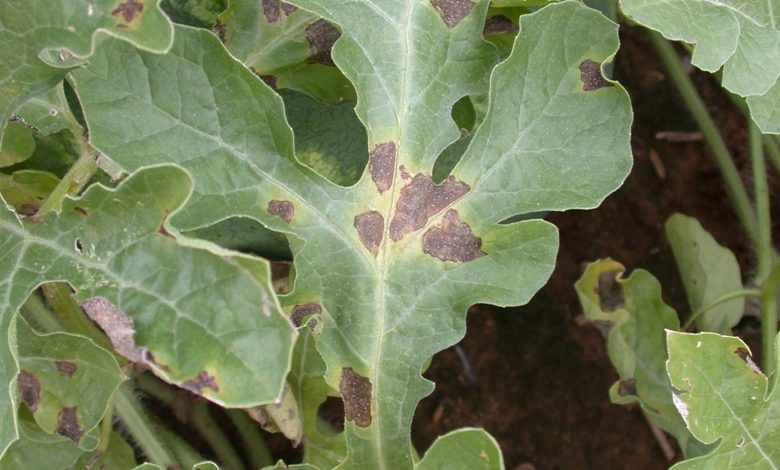
Hello dear Agrohuerters! As promised, we continue with the summaries of the pests and diseases that can affect each of the crops in the garden. We already have the common pests and diseases in tomato and also in pepper. Today is the turn of the watermelon, a very typical fruit of this summer time. If your watermelon plant starts to get sick, you can find out in this article what may be attacking it.
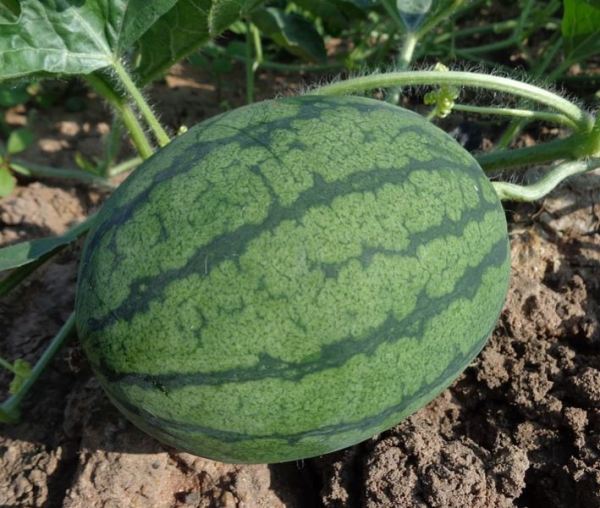
caterpillars on watermelon
We come across some considerable-sized perforations through which, sometimes, we can see the caterpillar gobble up our fruit. You can also see gnawing on leaves, flowers, fruits and tender shoots, usually with droppings and NO SLIME (it gives us the clue that it is not a snail or slug).
The main caterpillar species that can affect watermelon are : Helicoverpa spp., Spodoptera spp., Autographa gamma, Chrysodeixis chalcites, Diaphania nitidalis, Diaphania hyalinata, etc.
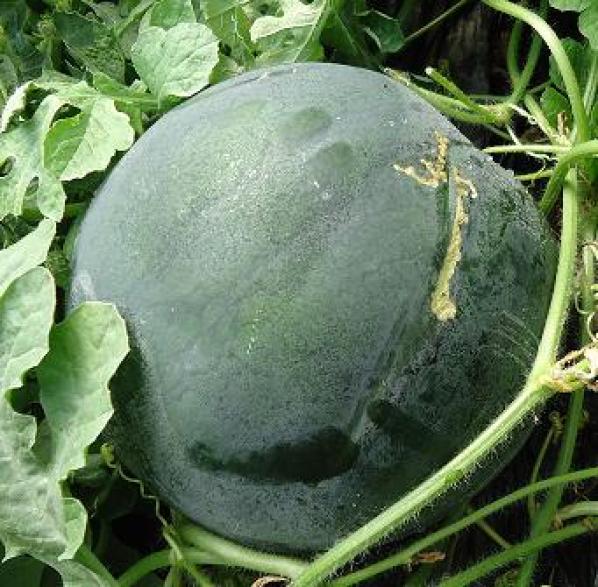
In the post about caterpillars on plants there are more details of the symptoms and possible ways to eliminate a Lepidoptera pest.
watermelon aphids
Aphids produce downward curling and wrinkling of leaves. In addition, you can see colonies of these small dark or greenish insects, especially in the tender shoots of the developing plant. Another clue is the presence of molasses (sugary and sticky substance) and ants around them defending them.
The main aphid species that affect watermelon are: Myzus persicae, Aphis gossypii.
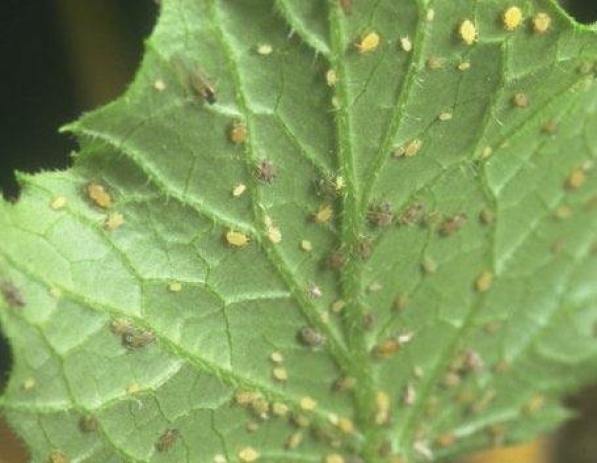
Whiteflies on watermelon leaves
We can see some white midges (which are not actually flies) with a characteristic erratic flight when shaking the plant. Also, like aphids, they release honeydew. They are usually arranged on the underside of the leaves.
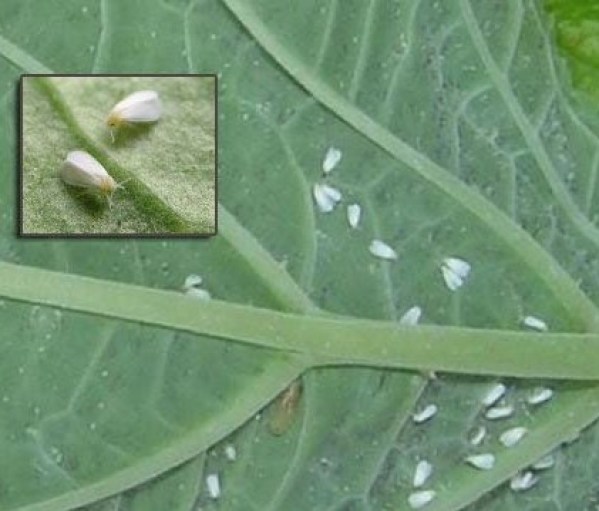
Whitefly species: Trialeurodes vaporarium, Bermisia tabaci.
Spider webs on watermelon leaves
The red spider (Tetranychus urticae) is a mite that leaves discolored leaves with small dots and silks. If it affects significantly, it can cause desiccation and defoliation of the plant.
White galleries on the leaves: leafminer fly
The Miner Fly (Liriomiza spp.): Makes clear and sinuous galleries in the leaves.
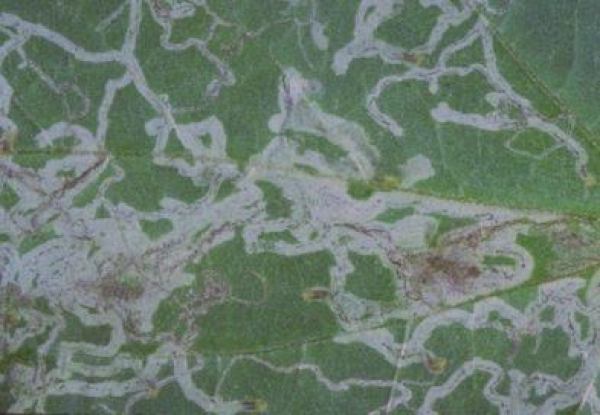
thrips in watermelon
Flower thrips (Frankliniella occidentalis): Damaged plants have leaves with small, irregular silver spots, which correspond to lesions on the underside.
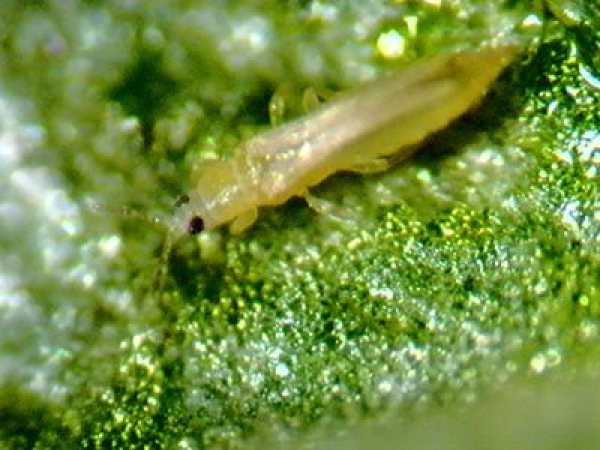
Fungi on watermelon plants
- Mildew (Pseudoperonospora cubensis): This fungus causes light green spots to appear on the upper surface of the leaves, which turn yellowish and round. On the underside, the spots correspond to a gray-purple felt due to the formation of the fungus spores. Later, the leaves turn black, taking on a parchment-like appearance and the petioles remain green, holding the completely dry leaves.
- Powdery mildew or ash (Sphaerotheca fuliginea and Erysiphe cichoracearum): They produce whitish, rounded and powdery spots on both sides of the leaf, as if they were snowflakes. The spots increase until they cover the leaves, which dry up, turn yellow and fall off.
- Gummy canker of the stem (Didymella bryoniae): In seedlings it mainly affects the cotyledons in which it produces rounded brownish spots, in which small black and brown spots distributed in the form of concentric rings can be observed. The most frequent symptoms are those of «gummy canker of the stem» which are characterized by a beige lesion on the stem, covered with pycnidia and/or peritheca (fungal structures), and often there are gummy exudations close to the lesion. In the aerial part it causes wilting and death of the plant.
-
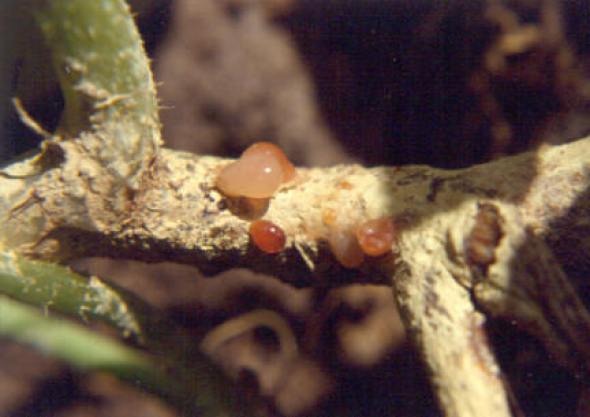
Gummy secretions produced by Dydimella bryoniae (Source: Agrolink.com.br) - Gray rot (Botrytis cinerea): The fruits show apical soft rot covered with gray mold. In addition, necrosis can occur in flowers.
- Neck and root rot (Phytophtora spp. Pythium sp., Rhizoctonia sp., Fusarium sp.): Young plants wither presenting strangulation and rot in the neck (the lowest area of the stem that borders the substrate) and/or estate.
- White neck rot (Sclerotinia sclerotiorum and Sclerotinia minor): This fungus causes soft, wet rot in the neck area, showing a cottony, white appearance accompanied by dark structures similar to peppercorns. In addition, the plant presents generalized wilting.
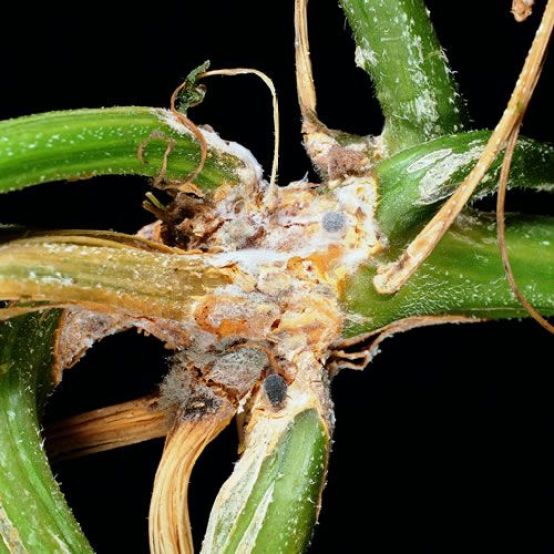
Cysts on the roots of watermelon: nematodes
Nematodes (Meloidogyne spp.): Plants infected by nematodes exhibit weak growth, wilting, chlorosis, and deformed and galled roots (nodules). Distribution in stands (plants forming more or less circular areas) or following irrigation lines.
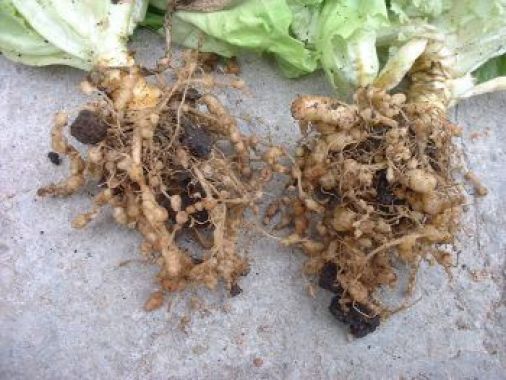
Viruses in watermelon plants
Virosis: Mosaics in leaves, dwarfism, chlorotic rings (yellow), curling and curling of leaves, deformation of fruits with wavy spots or rings.
Common physiopathies in watermelon
Physiopathies are diseases caused by abiotic factors, that is, there is no causal pathogen but it is caused by poor conditions in the environment such as deficiencies or excesses of nutrients, low or high temperatures, drought or poor management of irrigation or salinity, among others..
- Fruit sucking: The fruits grow malformed with a thin, undeveloped tip.
- Scorched or ironed fruits: On the side of the fruits exposed to the sun a depressed white area appears, leaving the tissue with a papery appearance and, if the fruit is still young, a scar is formed later.
- Fruit cracking: Appearance of longitudinal or concentric cracks around the area of the fruit peduncle that can take on a cork-like appearance.
- Clouding of fruits: The fruits stop growing shortly after the beginning of development and finally dry up.
References
- Braun, U. (1982).Morphological Studies in the Genus Oidium III. Zentralblatt für Mikrobiologie. 137(4), 314-324.
- Lecoq, H., Desbiez, C. (2012). Chapter 3 – Viruses of Cucurbit Crops in the Mediterranean Region: An Ever-Changing Picture. Editor(s): Gad Loebenstein, Hervé Lecoq, Advances in Virus Research, Academic Press, 84, 67-126.
- Kyriacou, M., Leskovar, D., Colla, G., Rouphael, Y. (2018). Watermelon and melon fruit quality: The genotypic and agro-environmental factors implicated. Scientia Horticulturae, 234, 393-408.
I hope that the article has helped you identify the pests and diseases that may be affecting your watermelon plant. We will try to dedicate an article to each one of them so that you can fight them. Until next time Agrohuertistas!

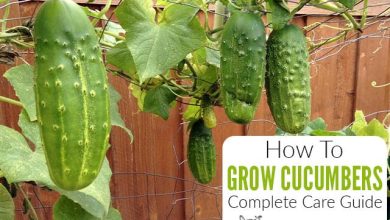
![Photo of Grow Mushrooms in Alpacas: [Planting, Care and Irrigation]](https://www.complete-gardening.com/wp-content/uploads/2021/06/setas-en-alpacas-383x220.png)

